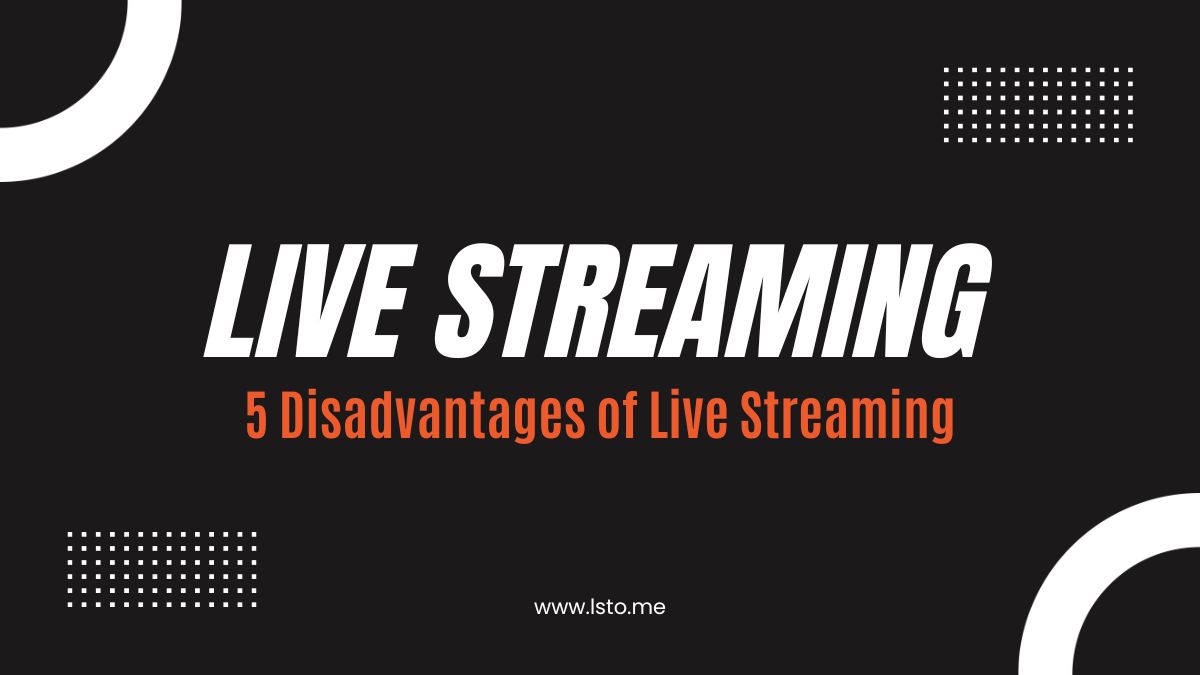
While live streaming can provide numerous advantages for businesses, there are also some disadvantages to consider. In this blog post, we’ll explore the potential drawbacks of live streaming and why businesses should be aware of them.
1. Technical Issues
Live streaming has become an increasingly popular way for businesses and individuals to engage with their audience. However, one of the biggest disadvantages of live streaming is the potential for technical issues. These technical issues can range from minor hiccups to major disruptions that completely ruin the live stream.
One of the most common technical issues with live streaming is a poor internet connection. Live streaming requires a stable internet connection, and even minor disruptions can cause buffering or freezing during the stream. This can lead to frustrated viewers who may leave the stream altogether. Additionally, other factors such as hardware failure or software glitches could also cause technical difficulties during a live stream.
Technical issues not only disrupt the viewing experience but also affect how your brand is perceived by your audience. Viewers may perceive your brand as unprofessional or unreliable if you encounter frequent technical problems during your live streams.
2. Limited Reach
Live streaming has become a popular way for businesses and individuals to connect with their audience in real time. However, one major disadvantage of live streaming is its limited reach due to the requirement of an internet connection. Not everyone has access to high-speed internet, and in some areas, internet speeds may not be fast enough to support live streaming.
This can be particularly problematic for businesses that rely on live streaming as part of their marketing strategy. If a significant portion of their target audience cannot access the stream due to slow or no internet connectivity, then they risk losing potential customers and revenue. Additionally, this can also lead to frustration among those who are unable to participate in the event or activity being streamed.
Moreover, even if someone does have access to high-speed internet, technical issues such as buffering and dropped connections can still occur during a live stream. This can cause interruptions and negatively impact the viewer’s experience.
3. Lack of Control
Live streaming has become an integral part of digital marketing strategies for various businesses around the world. However, some disadvantages come with using live streaming as a marketing tool. One of the most significant drawbacks is the lack of control over what is being broadcasted. Unlike pre-recorded content, live streaming happens in real-time, presenting businesses with less control over what their audience sees and hears.
This lack of control can lead to several issues like mistakes or unforeseen circumstances that may occur during a live stream event. For example, technical glitches such as poor internet connection or equipment failure can hinder the quality of the stream and negatively impact the overall experience for viewers. Additionally, since live streams are unscripted, it’s not uncommon for presenters to accidentally say something inappropriate or make a mistake on camera – this could damage the brand’s reputation if not handled properly.
4. Time-Consuming
Live streaming has become an increasingly popular marketing strategy for businesses looking to expand their reach and engage with their audience. However, while live streaming can be an effective tool, it also has its disadvantages. One of the biggest challenges businesses face when it comes to living streaming is the amount of time and effort it takes to plan, prepare, and execute a successful stream.
From choosing the right equipment to promoting the event ahead of time, numerous steps must be taken to ensure that your live stream goes off without a hitch. This can be especially challenging for small businesses or those with limited resources who may not have the manpower or budget needed to fully devote themselves to planning a high-quality stream.
In addition, even after all of the preparation is complete, there is still no guarantee that everything will go as planned.
5. Difficulty in Measuring Success
Measuring the success of a live stream can be challenging for businesses. Unlike traditional marketing strategies, live streaming is a new and constantly evolving medium. As such, there aren’t clear benchmarks or established metrics to determine if your live stream was successful or not. This makes it difficult for businesses to gauge the effectiveness of their investment in live streaming.
One major disadvantage of measuring success through live streaming is the lack of data available. While some basic metrics can be tracked, such as viewer count and engagement rate, these don’t tell the complete story. It’s hard to know how many people watched your video all the way through or whether they purchased it as a result of what they saw on screen.
Another issue with measuring success through live streaming is that it’s often difficult to compare apples-to-apples from one event to another.
Conclusion
Live streaming can provide businesses with numerous advantages, but there are also potential disadvantages to consider. Technical issues, limited reach, lack of control, time-consuming preparation, and difficulty in measuring success are all factors to consider when deciding whether to incorporate live streaming into your marketing strategy. By weighing the pros and cons, businesses can make an informed decision about whether live streaming is the right choice for their brand.




